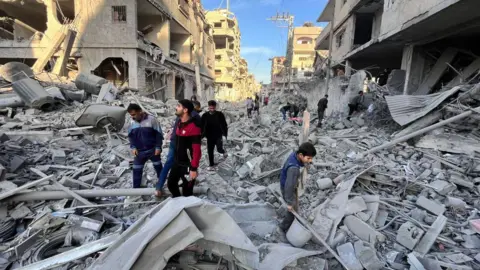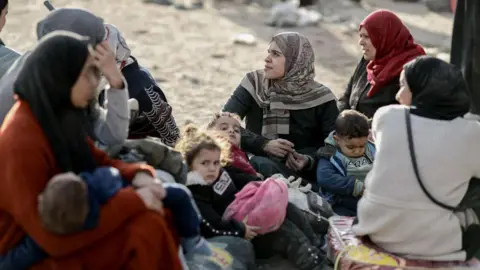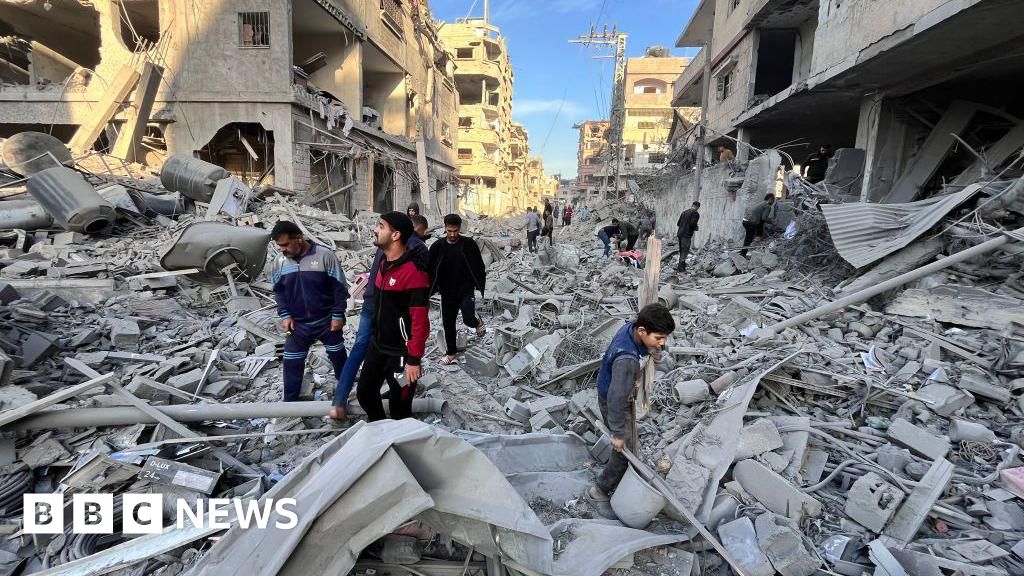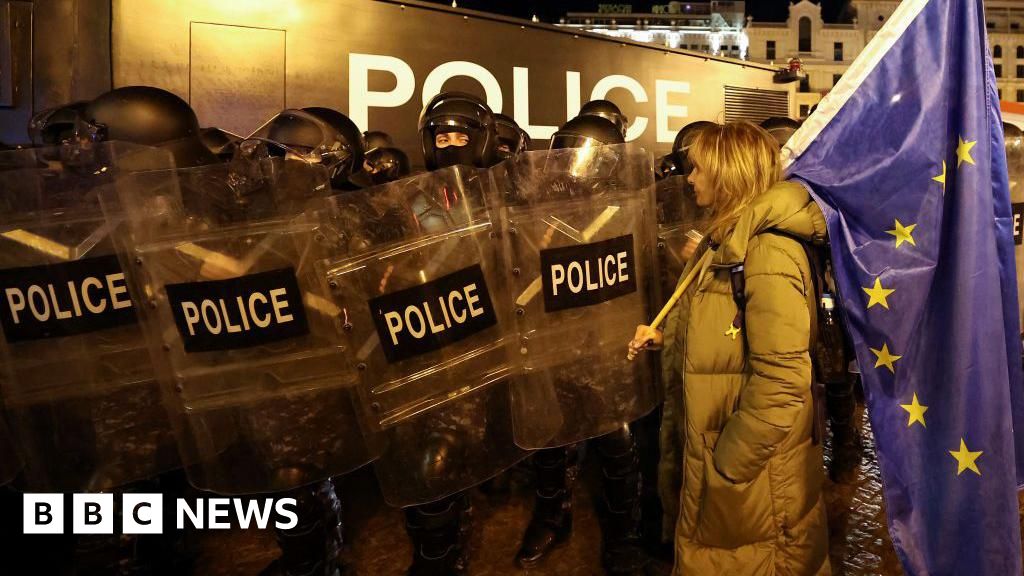 AFP
AFPPalestinians are “facing diminishing conditions for survival” in parts of northern Gaza under siege by Israeli forces because virtually no aid has been delivered in 40 days, the UN has warned.
The UN said all its attempts to support the estimated 65,000 to 75,000 people in Beit Hanoun, Beit Lahia and Jabalia this month had been denied or impeded, forcing bakeries and kitchens to shut down.
Earlier this month, a UN-backed assessment said there was a strong likelihood that famine was imminent in areas of northern Gaza.
The Israeli military has said its six-week-long offensive targets regrouping Hamas fighters, and that it is facilitating civilian evacuations and supply deliveries to hospitals.
Hundreds of people have been killed and between 100,000 and 130,000 others have been displaced to Gaza City, where the UN has said essential resources like shelter, water and healthcare are severely limited.
UN agencies had planned 31 missions to the besieged areas of North Gaza governorate between 1 and 18 November, according to the Office for the Co-ordination of Humanitarian Affairs (OCHA).
Twenty-seven were rejected by Israeli authorities and the other four were severely impeded, meaning they were prevented from accomplishing all the work they set out to do.
“This is happening when the IPC Famine Review Committee said just 11 days ago that parts of northern Gaza face an imminent risk of famine – and that immediate action is needed in days, not weeks,” UN spokesperson Stéphane Dujarric told reporters in New York.
“The result is that bakeries and kitchens in North Gaza governorate have shut down, nutrition support [for children and pregnant and breastfeeding women] has been suspended, and the refuelling of water and sanitation facilities has been completely blocked.”
Mr Dujarric said access to the three barely functional hospitals there also remained severely restricted, amid what he called “desperate shortages” of medical supplies and fuel.
On Sunday, a World Health Organisation-led mission to Kamal Adwan hospital in Beit Lahia was able to deliver 10,000 litres of fuel and transfer 17 patients, three unaccompanied children and 22 caregivers to al-Shifa hospital in Gaza City.
However, Mr Dujarric said the aid workers were forced to offload all the food supplies and some of the medical supplies they were transporting at an Israeli military checkpoint before reaching the hospital.
The director of Kamal Adwan, Dr Hussam Abu Safiya, warned on Wednesday that the situation there was becoming “even more catastrophic”.
Gaza’s Hamas-run health ministry cited him as saying that the hospital had 85 patients receiving “the minimum level of healthcare” and that it needed children’s food and infant formula to treat an increasing number of malnutrition cases.
Since Tuesday, 17 children had arrived at the emergency room showing signs of malnutrition and an elderly man had died due to severe dehydration, he added.
There was no immediate comment from the Israel Defense Forces (IDF).
But data from the Israeli military body responsible for humanitarian affairs in Gaza, Cogat, said 472 aid lorries had entered northern Gaza via the Erez West crossing as of 17 November, without specifying whether any of that aid was allowed into the besieged areas.
Cogat also said it was continuing to work with international partners to “facilitate broad humanitarian responses for the civilian population in Gaza”.
 AFP
AFPOn Monday, a boy from Beit Lahia told BBC Arabic’s Gaza Today programme that he and his family had fled to Gaza City after the Israeli military dropped leaflets from a quadcopter, ordering their immediate evacuation.
“The road from Beit Lahia to Gaza [City] was rough and bumpy with no transport available for us. When we arrived, we didn’t find anything… neither food nor drink. We headed to the schools, but there was no space left because the number of displaced… was huge,” he said.
“As a result, we were thrown into the streets and didn’t know where to go. We are six families living in the streets, sitting on sand, dirt and debris.”
The IDF said in a statement on Monday that its forces had killed “dozens of terrorists in close-quarters encounters and through targeted strikes” in the Beit Lahia area over the past week.
On Wednesday, a spokesman for the Hamas-run Civil Defence agency told AFP news agency that a drone had killed two people, including a 15-year-old girl, at a school sheltering displaced families in Beit Lahia.
The agency’s first responders had also recovered the bodies of seven people killed in an overnight Israeli strike on a house in Jabalia, he added.
Israel launched a campaign to destroy Hamas in response to the group’s unprecedented attack on southern Israel on 7 October 2023, in which about 1,200 people were killed and 251 others were taken hostage.
More than 43,980 people have been killed in Gaza since then, according to the territory’s health ministry.



